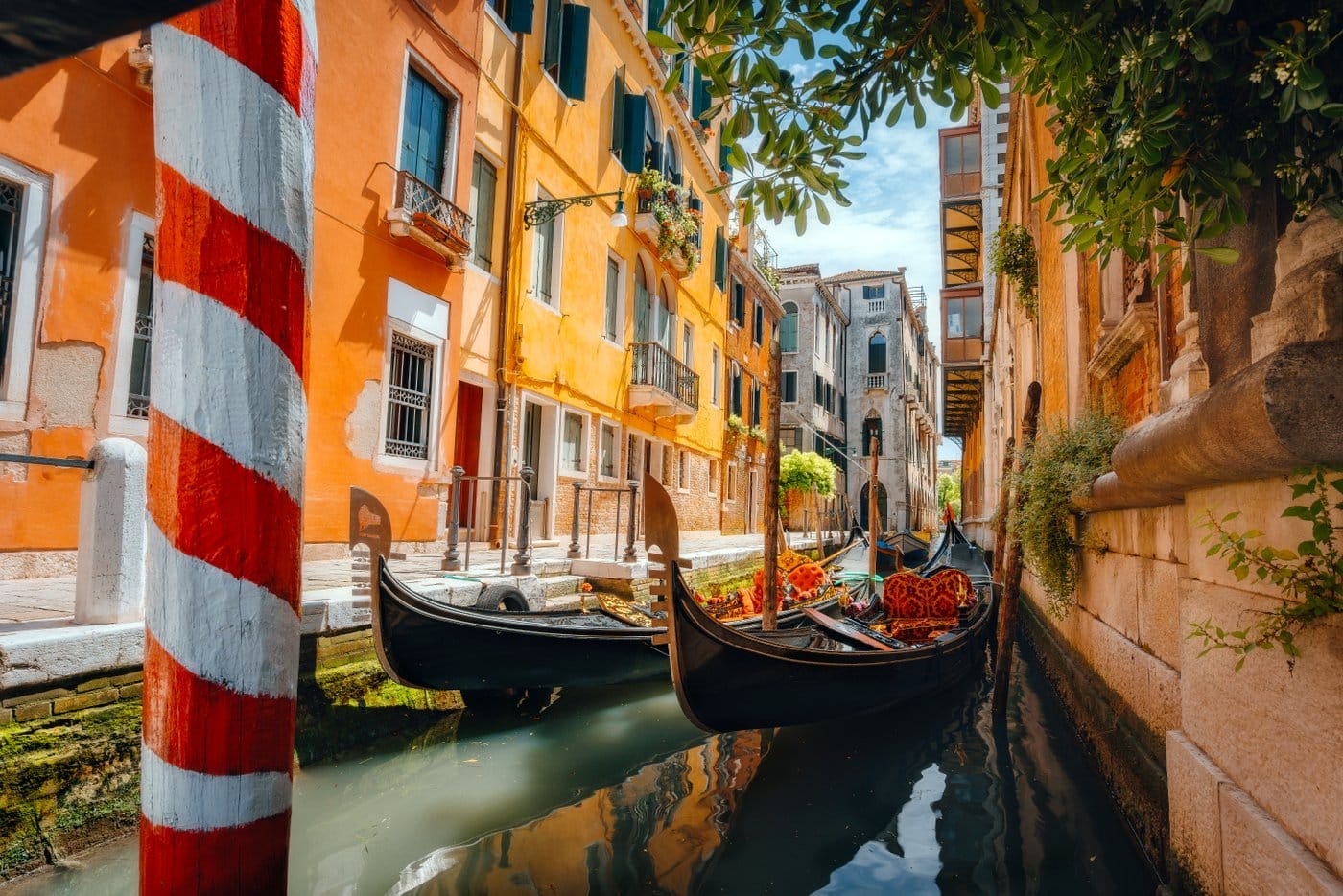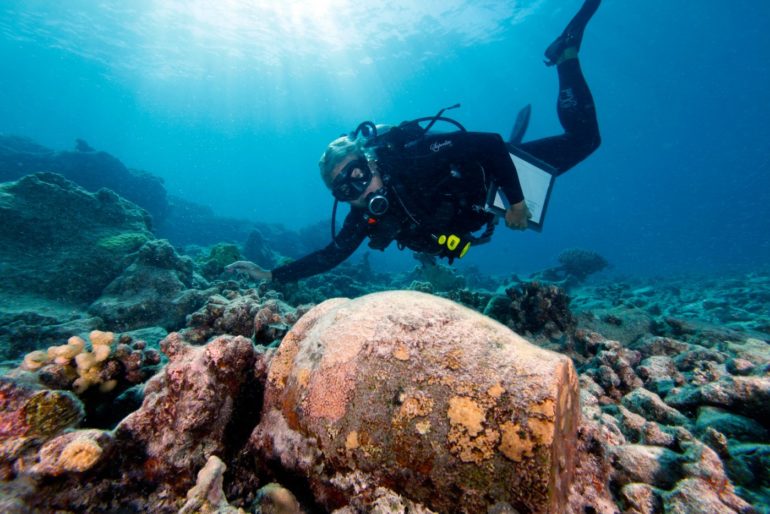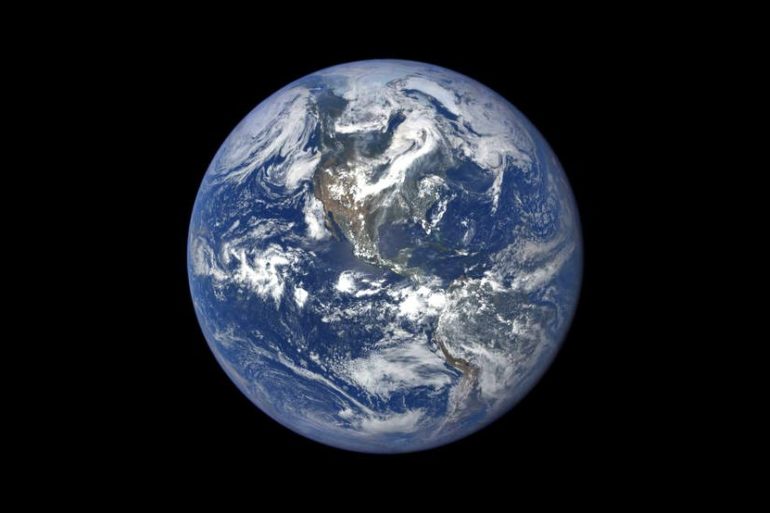Is the city of Venice really sinking?
Is the Italian city of Venice really sinking — to such a degree that it will be underwater in the near future?
It’s true that Venice is sinking — historically, about seven centimeters each century for the past 1,000 years. There are several factors contributing to the problem, which seems to get worse by the decade.
But it’s not only settling into its marshy base: the grand Italian city is also falling victim to rising water levels, which are really compounding the problem.
How Venice is sinking
“Venice appears to be continuing to subside, at a rate of about 2 millimeters a year,” said Yehuda Bock, a research geodesist with Scripps Institution of Oceanography at the University of California, San Diego, in La Jolla, California, and the lead author of a 2012 article on the city’s downward drift. “It’s a small effect, but it’s important.”
Here’s a look at some of the many factors at play here.

Problem #1: Weight
Founded across 117 islands in a marshy lagoon during the fifth century AD, the foundation of Venice was made out of millions of wooden pilings — sharpened poles that were driven through the mud and into the sandy clay underneath.
On of the pilings, oak planking was placed, and then came layers of marble. Then on top of the marble, the city’s buildings and walkways were constructed. The weight from many centuries of construction caused the ground to compact, and the city to settle.
Problem #2: Groundwater removed
Another big problem came as the aquifers under the city were drained over the centuries by people pumping groundwater. That water helped sort of prop up Venice — sort of like it was resting on a waterbed. (Artesian wells were banned in the 1960s to keep this from becoming an ongoing problem, but much of the damage was already done.)
Problem #3: The earth moves
Another big factor: plate tectonics — the natural movement of the earth. Venice is on the Adriatic plate, which subducts beneath the Apennines Mountains — causing the city (and that area generally) to drop slightly in elevation.
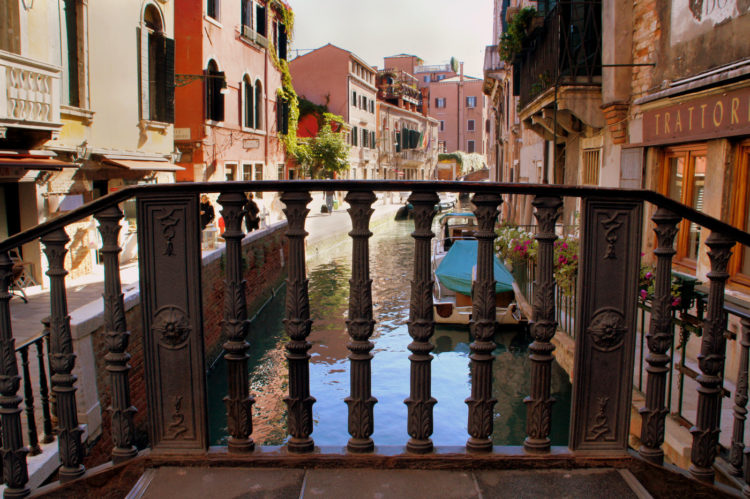
Water around Venice is rising
Problem #1: Starting at sea level
Venice was built at sea level, which is problem number one. There’s pretty much nowhere to go but down.
Problem #2: Rising waters
Given that the sea level is also rising in the Venetian lagoon — accounting for another 2mm per year — the surrounding waters are increasing by about 4mm per year relative to the elevation of the city, Bock says.
Simple math says that, over the course of 20 years, if Venice and the sea continue to fall and rise at those same rates, we can expect a differential of about 80 mm (3.2 inches).
Problem #3: Acqua alta & more frequent flooding
The frequency of floods in Venice is increasing, Bock says, and now about four or five times a year residents and tourists have to walk on wooden planks to stay above the floodwaters in large parts of the city.
Acqua alta, or “high water,” is what they call the seasonal flooding in Venice. It’s not enough to destroy the city in a season, but causes a lot of hassle, and doesn’t bode well for the future.
For now, the city deals with it by keeping scaffolding and wooden planks available in areas with high foot traffic — such as Piazza San Marco, Venice’s central square, shown below during both low and high tides.
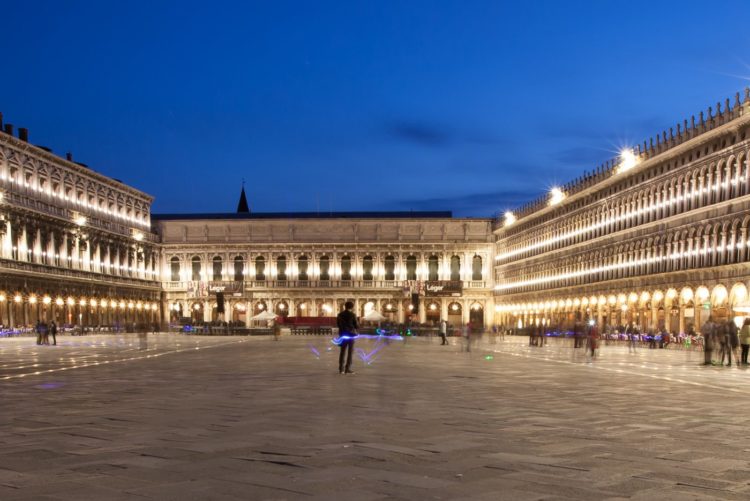
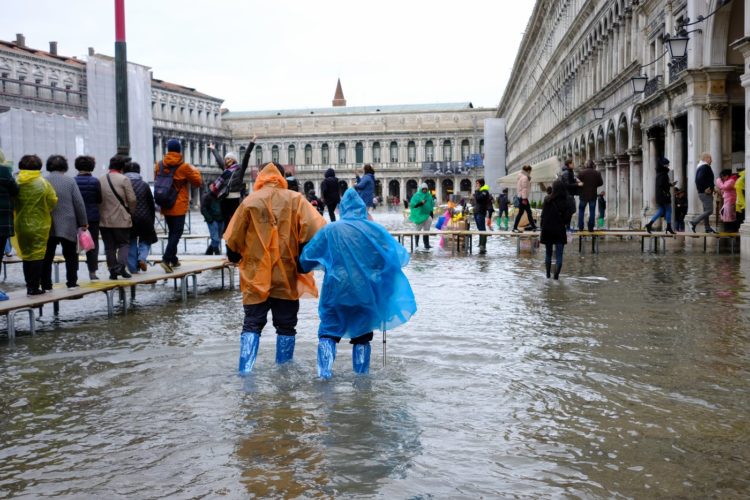
Italy’s plan: Floodgates called Mose
For several years, Italy has been working on a sea barrier, called Mose (for Moses). As of 2020, it’s not yet functional — but said to be nearly ready.
Bock says the adjustable barriers were designed to protect the city from tides that are coming in higher and higher, as overall sea levels are rising in response to climate change.
Mose barriers are made up of flap gates, installed in the bottom of the inlets, that provide a way to temporarily separate the lagoon from the sea during high tide.
It’s a sight to see
If you have the chance to visit Venice, take it. It’s an amazing city, and we don’t know how long it will be around in its present state.
To find out more, check out Nova: The Sinking City of Venice and, from BBC Travelwise, Keeping Venice from sinking.

